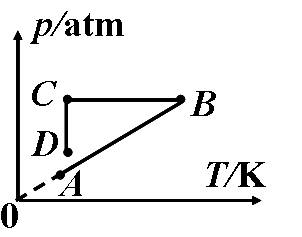Standard gas state and formula synthesis (2)
Standard gas ideal gas equation pV=nRT
It is a basic characteristic of an ideal gas that a standard gas follows the ideal gas state equation. There are four variables in the equation of state of an ideal gas -- pressure P of the gas, volume V of the gas, number of moles of the gas N, temperature T and a constant (often R for the gas). As long as three of the variables are determined, an ideal gas is in one state. Therefore, the equation is called the equation of state of an ideal gas. Standard molar ratio of gas temperature T and n is the unit of fixed, K and mol, respectively, and the gas pressure p and determining the volume V unit has a variety of, at this point, the state equation of constant value of R (including units) with changes, in the operation, be sure to pay attention to the correct access R value: p unit V R values (including units) of the ATM ATM Pa kPa Pa m3 0.08206 cm3 L L L L? atm/mol? K 82.06 cm3? atm/mol? K 0.008134 L? Pa/mol? K 8.314 L? kPa/mol? K 8.314 m3? Pa/mol? K do 1 ATM = 101.325 kN/m2; 1 pa = 1 n/m2; 1N? M = 1 j; When SI units are used for all physical quantities, R=8.314J/mol? From this we can calculate the volume solution of the standard gas under the standard condition: From PV =nRT: V= N? R? t/p =1mol? 8.314 L? Pa/mol? K? 273.16 K = 22.4127224278 L / 101325 pa
In 1810, Dalton discovered that the total pressure of a mixture of gases is equal to the sum of the pressures generated by putting the concentration of each component gas in the same container. This rule is called Dalton's law of partial pressures. As a matter of fact, Dalton's law of partial pressure is only valid for ideal gases, but for real gases, due to the existence of intermolecular forces, Dalton's law will be biased. Therefore, mixtures of gases which satisfy Dalton's law of partial pressure are called ideal mixtures of ideal gases. GB102.8-82 issued by the National Bureau of Measurement adopts the recommendation of IUPAC, and defines the partial pressure Pb of gas B in the mixed gas as Pb = xBP, where XB is the mole fraction of gas B, and P is the total pressure of the mixed gas at the same temperature. So we can get: P = P1 + P2 + P3 + P4 +... The above equation shows that the total pressure of the gas mixture is equal to the sum of the partial pressures of its constituent gases at the same temperature. This equation can be used for any gas mixture.
For an ideal gas, take P total V= N total RT/V, and it can be seen that the partial pressure PB is the pressure displayed when the ideal gas B occupies the volume V of the mixture alone.
The experimental law of an ideal gas
Example: There are 4.4GCO2, 14Gn2, and 12.8GO2 in the mixed gas, and the total pressure is 2.026×105Pa. Find the partial pressure of each component gas.
n(CO2)=4.4g/44g/mol=0.10moln(N2)=14g/28g/mol=0.50mol
n(O2)=12.8g/32g/mol=0.40molx(CO2)=n(CO2)/[n(CO2)+n(N2)+
n(O2)]=0.10x(N2)=n(N2)/[n(CO2)+n(N2)+n(O2)]
=0.50x(O2)=n(O2)/[n(CO2)+n(N2)+n(O2)]=0.40
p(CO2)=0.10×2.026×105Pa=2.0×104Pa
p(N2)=0.50×2.026×105Pa=1.0×105Pa
p(O2)=0.40×2.026×105Pa=8.1×104Pa
Standard gas standard state. Ideal gas equation. Density of gas. The law of partial pressures. Determination of relative molecular mass of gases. Solubility of gases (Henry's law).
The standard gas constant R is 0.08206L? atm? mol-1? K - 1 or 8.314 m3? Pa? mol-1? K - 1.





 Facebook
Facebook YouTube
YouTube LinkedIn
LinkedIn Twitter
Twitter